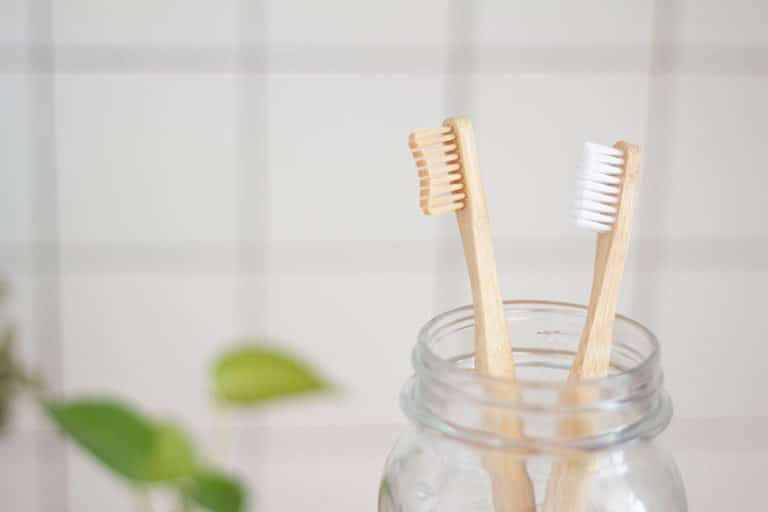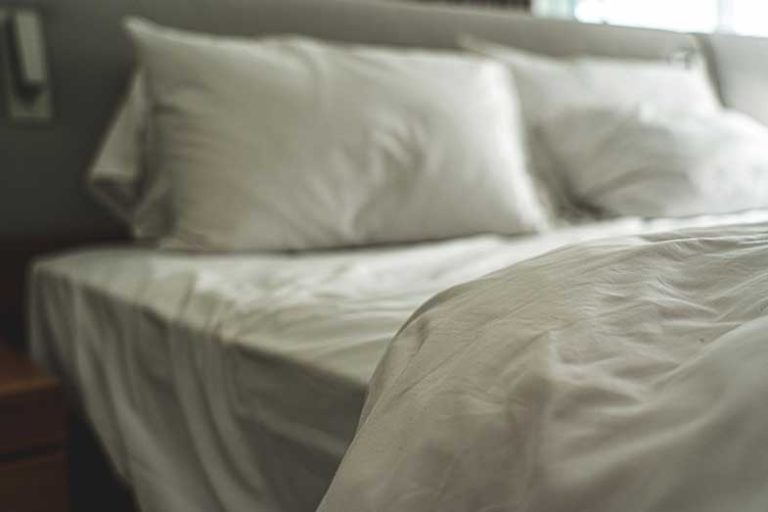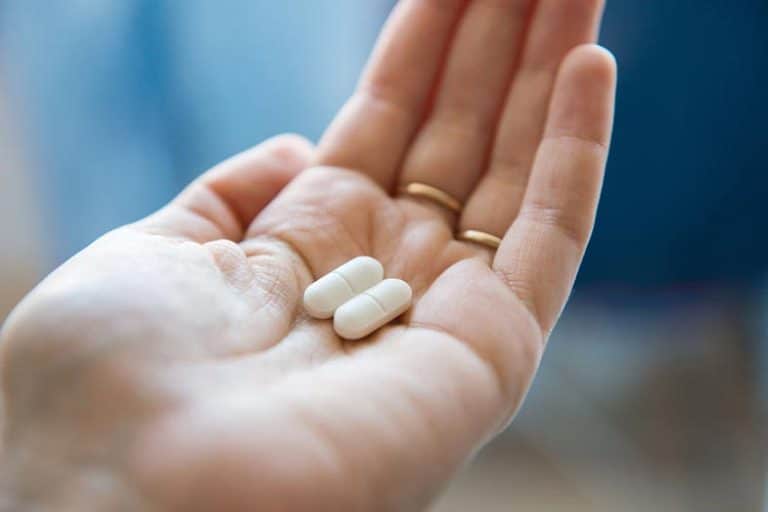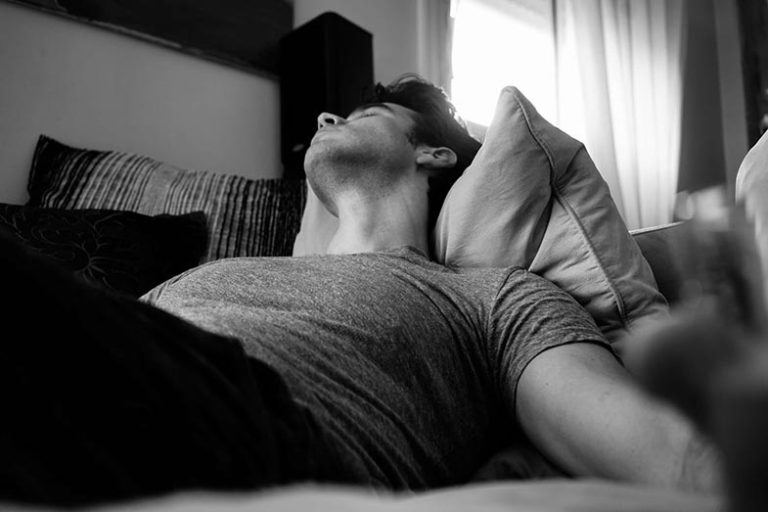When Can I Take out a Lobe Piercing to Sleep?
Disclosure: We may get commissions for purchases made through links in this post.
You just got your ear pierced, and it looks great. The only thing is, when can you take it out to sleep?
When can I take out a lobe piercing to sleep? You can take out your lobe piercing to sleep after it has healed, usually after four months. The amount of time depends on how you care for the new piercing and how quickly it heals. Avoid taking it out too soon, or else it will be difficult to insert again.
If it gets infected, it will take longer, so you have to keep in mind to purchase quality earrings that will not wear out quickly, or cause issues while you sleep.
Earrings that can tarnish easily can affect the healing process of your piercing. Poor quality earrings can get your lobes infected when worn in the long run. You should also clean your piercings properly. A saline solution should be during the first few weeks.
In this article, we will answer some of the most common questions about the healing process and other inquiries regarding the proper care of your piercings.
Can You Sleep on a New Piercing?
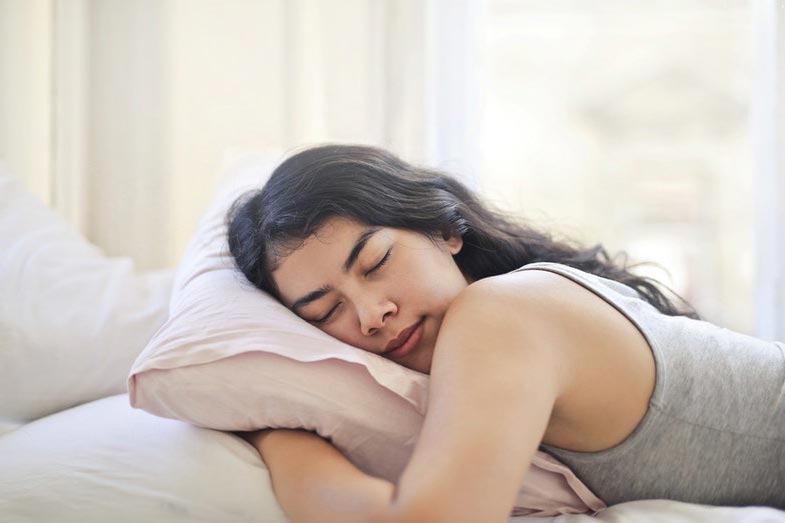
You should not sleep on a new piercing, even if you do not feel any pain. Moving your earrings around will hinder the healing process. In this case, purchasing a pillow with a hole or a travel pillow will help a lot if you can’t stay still while sleeping.
How Can You Sleep with New Piercings on Both Ears?
Sleeping on your back is the best way to avoid infection, especially both ears are pierced. Compared to having a piercing on only one ear, having piercings on both at the same time can make it much more complicated for you to sleep.
Even slight movements can put pressure on your piercings, making it difficult for you to sleep properly. Therefore, if possible, use small hoops or ring earrings (view on Amazon) instead of studs because they may be more comfortable to wear while sleeping.
Can I Change My Earring 2 Weeks After Piercing?
You should wait at least a month to change your earring. Don’t leave it out for too long, or else it will heal over and be harder to insert the new earring. Keep in mind that you should not buy cheaply made jewelry, especially if your piercing is not fully healed. If you are worried about infection, wait it out until the sixth week to make sure the piercing will not get infected.
How Long Do Ears Hurt After Piercing?
If properly cared for, ear piercings will be sore for only two weeks. However, if you neglect your piercing and still sleep on the side where you had it done, it will take more than a couple of weeks. Take note that even if you do not feel any discomfort on the part where you had your ears pierced, you should still not sleep on that side, not until it becomes fully healed.
Should You Take Out Your Earring If It Gets Infected?
There is no need to take out your piercing if it gets infected as long as you are using the right jewelry. Otherwise, it will cause a reaction with the sterile saline that you will be using to clean your piercing. To identify if your piercing is infected, check the wound if it is swelling or if it has a yellow discharge. As soon as you notice such symptoms, treat it immediately to ensure faster healing.
To clean the infected piercing, you need to:
- Wash with antibacterial soap and dry your hands thoroughly.
- Clean the piercing with a sterile solution twice a day with a cotton pad or swab.
- Avoid putting pressure on the ear while cleaning it; light patting of the saline solution will do.
- Pat it dry with a clean towel.
- Soak the area in a sterile salt solution that gradually alleviates the swelling.
Using alcohol, ointments, and hydrogen peroxide can further irritate the infected area. Routine care is necessary to cure the infection faster, although some cases of infection, especially those in the cartilage area, requires hospitalization to avoid the swelling from getting worse.
How Do You Prevent Your Ears From Getting Infected?
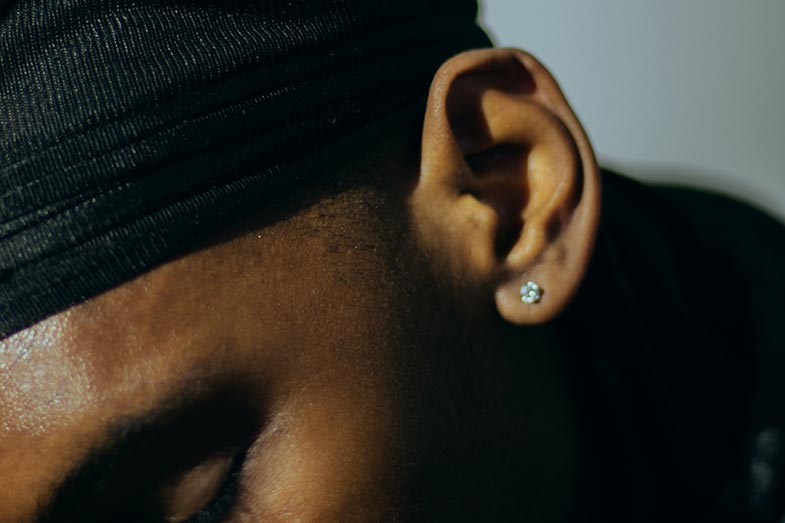
- Avoid having your piercings done at home or by a friend. Always get your piercings done by professionals.
- Check the earring used. If it is not a legitimate gold or silver earring, it will bring complications and infections that will cause you to shell out money for hospitalization.
- Always remember to clean your ears twice a day, not doing so will interfere with the wound’s healing process.
- If you have a cartilage piercing, take the extra step by cleaning it three times a day and drying it entirely afterward.
- Avoid playing with your jewelry. Your piercing is an open wound, and you do not want to make it worse or extend the healing phase.
- Only touch your ears with clean hands. Your phone and other surfaces may have certain bacteria that can trigger infection on your ears, so always be aware to prevent yourself from mindlessly touching your ears.
- Change your beddings regularly and avoid getting your dogs to sleep with you in the meantime, just to be sure that where you are sleeping is as clean as possible.
- Avoid spraying perfume and other household sprays; some chemicals in household products cause adverse effects on an open wound.
- Use a piercing care (view on Amazon) product to keep your piercing clean and disinfected.
Are Piercing Guns Recommended?
Yes, piercing guns are recommended but only for some instances. It depends upon where you would like to have yourself pierced. You might see it as a good deal whenever jewelry stores are advertising free ear piercings when you purchase an earring from them, but most of the time, the jewelry you will buy is not recommended to be used as a piercing stud.
To make matters worse, store operators are not aware of the possible adverse effects of mishandling piercing guns. Most of them do not even know that it is not ideal to use a piercing gun if you want a cartilage piercing; sadly, some stores only want profit while compromising the well-being of their customers.
Other Facts About Using Piercing Guns:
- Piercing guns are not fully sterilized when used. Although it is possible to disinfect the gun, it will not remove all traces of bacteria.
- Piercing guns are usually made of plastic, so there are no other ways to sterilize them properly. Most of the piercers just use disinfectant wipes and alcohol before the procedure, which is not sufficient.
- Studs that are placed in the gun are always new, but the fact that the blood from other customers may have made its way to the gun can pose severe risks to the next customers.
- Storefronts often don’t have a sink where operators can wash their hands before the actual piercing session, and because of this, there are more instances of people getting an infection by being pierced with a gun.
- The thickness of the ears is an issue. Some are not informed that piercing guns are not capable of doing piercings when used on thick parts of the ears, like the conch and daith, which can lead to damage.
- Piercing guns are only advisable if you choose to have an earlobe piercing. The infections are far less to occur than having cartilage piercing.
- Though it is easier to have yourself pierced with a gun, there is a high probability that the person doing it is not properly trained. This will cause uneven piercing when you opt for multiple ones.
Why Choose Professionals to Do the Piercing for You?
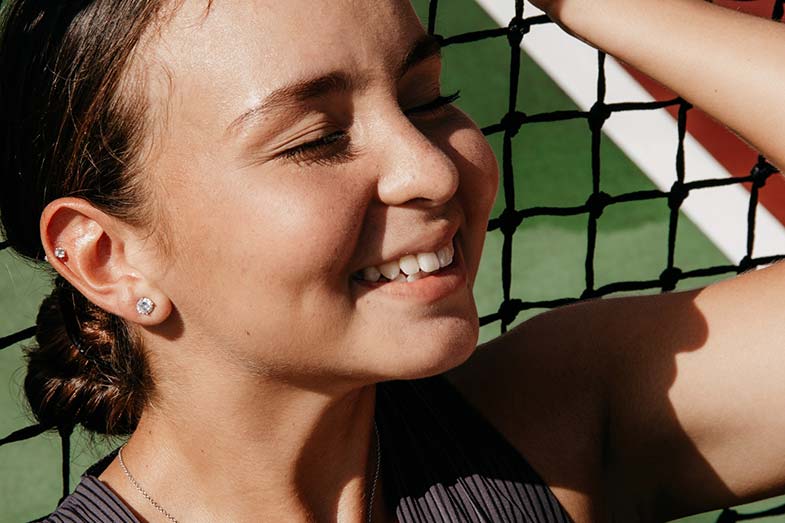
You might be choosing either to do the piercing by yourself or by a friend who tells you she’s done it a lot of times. However, it is suitable to choose professionals to do the piercings for you. It is much safer because they are taught the proper procedures so you won’t get any infection or anything that might cause your piercings to close or heal slower than usual.
Instances of malpractice resulting in damage to the skin and intense swelling have been making rounds on the internet and posted by the customers who experienced it first-hand. It is a gentle reminder for those people who are having a hard time choosing between a professional and a non-professional. Do not compromise your safety and put yourself at risk by settling on a non-professional to do the piercings for you. Also, opt for a piercer who encourages a checkup after a few weeks.
Re-Piercing the Same Spot
Although the piercing should stay open if you’ve let it fully heal before you take it out, there are instances when it will close.
Can you pierce your ears twice in the same spot if the first piercing has healed? This will depend on several factors.
- Make sure the piercing has closed completely and not partially open. If it is still open, even just a small hole, you may be able to wiggle in the earring with a little help from an oil or lotion. Make sure you don’t force it in as this may result in bleeding, swelling, or infection. Check that you are trying to put the earring in the exact location where the piercing was done and do it slowly and gently. Also wash your hands properly to avoid infection in case of bleeding.
- If it has already healed, the healing process for the new piercing may take longer than the initial piercing. This means you have to sleep on your back for a more extended period as sleeping on your side may cause damage to the area, and you may aggravate the wound.
- In cases where there was an infection on the site before it healed, you want to check if it is really safe to re-pierce the same spot since the risk of doing it on damaged tissue is higher. The possibility of a recurring infection is more significant. Check that your pillows, pillowcases, bed, and beddings are changed just in case it was the source of the infection. Avoid sleeping anywhere that your pets may have laid down on.
- Consider piercing in another spot. Ask the opinion of a professional piercer on whether it will be safer to just start somewhere else than deal with the same site. It may not be precisely the spot where you want to have a piercing, but it is better than having to deal with unwanted complications.
- Be extra diligent with aftercare since this is a site that has gone through the process before. Check what you may have done incorrectly the first time, such as sleeping on your side, which put undue stress on the piercing site.
What Is the Best Aftercare Routine for My Piercings?
Aftercare is essential because it helps speed up the healing process of your newly pierced ears. Also, it prevents infection from forming. Following the right routine will result in the full healing of your piercing in one to two months (but will differ if you have a cartilage piercing).
- Clean your piercing twice a day; use antibacterial soap and rinse it properly to remove soap residue.
- Use a saline spray afterward to make the healing process faster. It is best to refrain from making your own saline solution.
- Do not take your jewelry out while it is still healing; taking it out prematurely will cause the piercings to close.
Furthermore, have your piercings checked if you see pustules forming and have a professional take your jewelry out if necessary instead of deciding to do it by yourself.
Is It Okay to Get Multiple Piercings at Once?
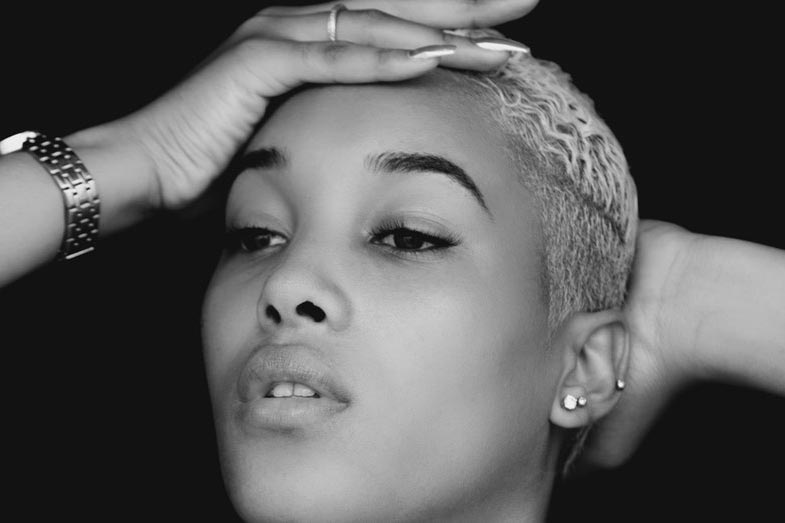
It depends. Piercers usually don’t do more than three. Avoid three cartilage piercings at the same time as this will take extra effort to maintain, make sleeping a lot more complicated, and the healing process will take much longer, especially if the piercings are right next to one another.
Professionals also consider doing multiple earlobe piercings because they only take a short time to heal and are low maintenance. Ideally, if you are opting to have multiple piercings, it should be two lobes and one cartilage to lessen the risks and cleaning time. Hence, if you choose to do multiple complicated piercings, do it one at a time.
Here are the things to think about before undergoing multiple piercings:
Piercings Can Be Painful
Lobe piercing is typically not painful, but there will be a manageable stinging sensation that will last for a few days. Despite that, each piercing that you get may hurt, and the pain may increase. That is why it is advisable to think twice if you have a lower pain tolerance because this will affect your day-to-day life while your piercings are healing.
The Caring Process May Be Taxing
It is easier to take care of a single piercing than having two or more. What if two of the four piercings get infected? It will more likely be difficult for you to look after and treat the infection as it will consume a lot of your time.
The Healing Process May Take Long
Our body’s healing capability cannot cure different spots at the same time. Therefore, it will take slower for your other piercings to heal.
Having Piercings May Be Inconvenient
Having multiple piercings will make it harder for you to sleep and do your daily activities. You do not want any object to get caught on them because it will hurt. If you have long hair, it is best to tie it at all times to prevent it from getting close to the piercing. Aside from that, avoid using headphones or any headgear that can put pressure on your ears.
Conclusion – When Can I Sleep Without Earrings?
A lobe piercing can be taken out to sleep after four months, or until it has fully healed. If taken ou before then, avoid leaving it out for too long, or else it will be more challenging to insert again.
Before getting pierced, do some research and take time to look for the right professionals who will do the procedure for you. This way, you can ensure your safety as you get your ears pierced.
Lastly, keep in mind the tips on sleeping with newly-pierced ears to avoid infection and speed up the healing process.

